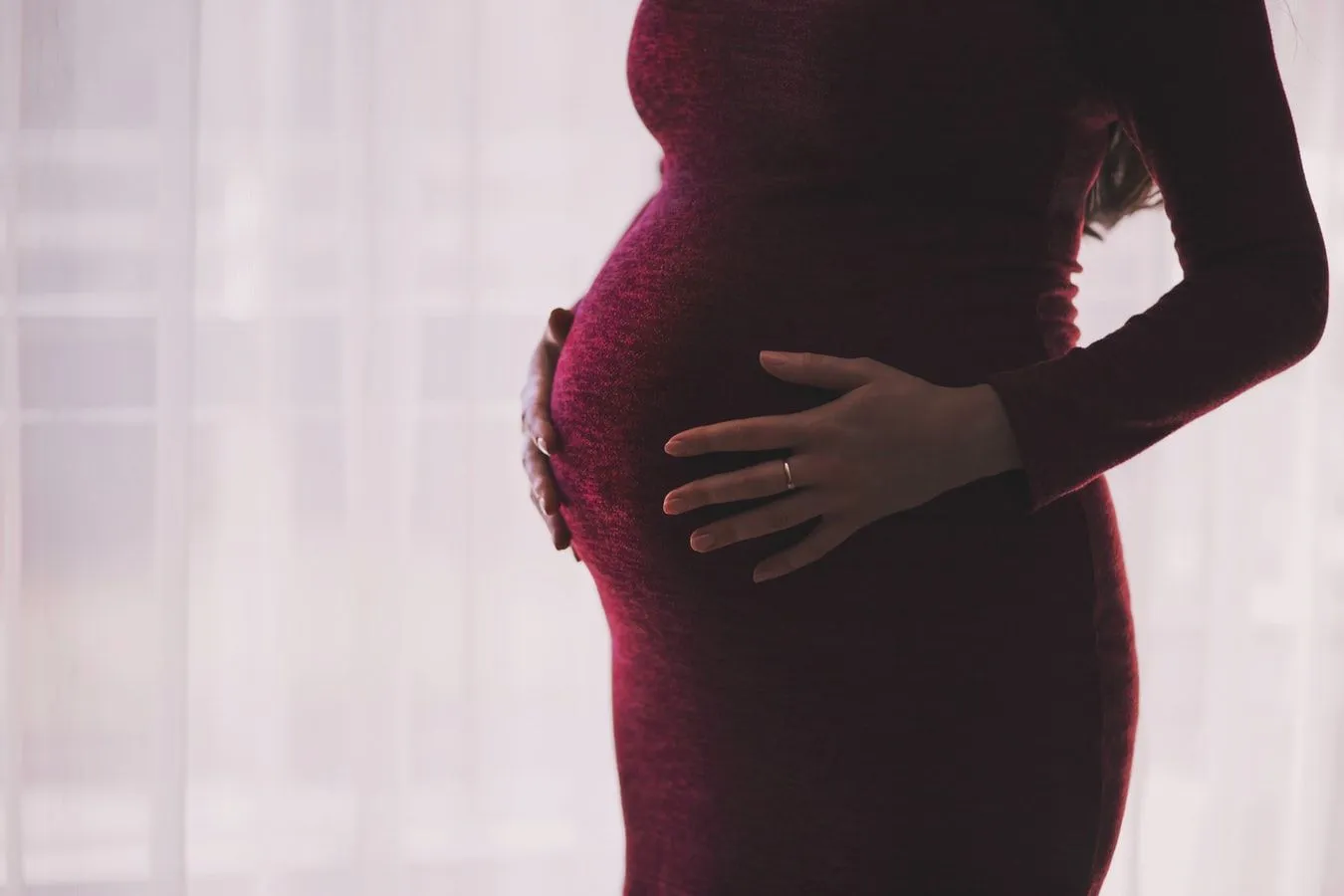FOR ALL AGES
You're in your third trimester and quickly approaching the big day, it's an exciting time!
Here at Kidadl, we know that there's a lot to think about and prepare for, whether it's your first baby or your fifth. From the size of your bump to the position of baby's head, there are so many different things swirling around in that, by now rather tired, mom brain!
So whether you're looking for details about what happens when you're 32 weeks pregnant or advice on your final 36 week ultrasound, Kidadl are here to help, with plenty of articles to bring you all the support and advice you need, as well as to put your mind at ease.
And since you're currently 31 weeks pregnant, this article will tell you all the key things you need to know, from how your baby is developing to exactly what is happening to your body, and what you can do to get prepared for a healthy and happy birth.
Now you're in the third trimester, your baby is getting bigger and stronger, ready to join the world. If your baby had the space to stretch right out, you'd find that they measure around 16 inches long from head to heel. The average length at birth is only 20 inches, so they're nearly as long as they're going to get.
Although your baby won't get too much longer, they will get heavier. At 31 weeks, your baby will weigh around three pounds (although it probably feels like more!), but they will likely put on an extra three to seven pounds between now and their delivery date! With this weight gain, your baby is getting plumper and filling out their skin, looking less wrinkly and more like a cute recognizable newborn.
Have you been comparing your baby's size to seeds, fruits, and vegetables during your pregnancy, week by week? By week 31, your baby is about the same size and weight as a coconut.
As well as their physical growth, there's also a lot more going on. You might have started to notice that your baby is enjoying longer stretches of sleep as they work hard on their final growth spurt.
But when they're awake, you'll know about it! Their quickly increasing size and development means they're becoming more and more active. Your baby should be moving around often, sucking their thumb, making faces, and moving their hands and feet around the edge of your uterus. It's not uncommon to start to see quite a well-defined hand or foot appear on your belly, as baby stretches out from inside. Your baby should also have a strong swallowing action now, so you will probably start to notice bouts of hiccupping.
Your baby's brain is also working tirelessly to create all those vital synapses and to finish hooking up all five senses.

At 31 weeks, it's not guaranteed that your baby will be head down (cephalic position), meaning they are in a position ready for birth. You still have two more months to go, so you don't need to worry too much about what position your baby is in now.
Some babies engage early and moms have to walk around with their baby's head right down in their pelvis for weeks, just because baby is head down, doesn't necessarily mean he or she is ready to be born! Other baby's leave it right until the very last minute and don't engage until labor begins. If your baby is still head up (breech position), there is plenty of time for them to move around and into the right position for birth (usually by week 36).
If your baby remains head up and in the breech position as your pregnancy continues, your midwife or doctor will talk through what this means for you and give you all the information you need to make an informed choice. You may choose for the midwife to try and turn the baby by hand; you may be advised that, with no obstructions, it's safe for you to proceed with a vaginal breech birth; or if there are any complications, you may be advised to go ahead with a Caesarean section.
You could also try a technique called belly mapping. Pioneered by a lady named Gaily Tully, it can help you figure out the exact position of your baby in utero, not just whether they are head up or head down in your pelvis, but also which way they are facing. Whether your baby is posterior (facing outwards) or anterior (facing backward) also has an impact on your birth, and accurately understanding the position of your baby in the womb could help you to gently alter their position.
Whatever happens, remember to talk often with your midwife or doctor: ask questions, get armed with information, and communicate your preferences.
As your pregnancy progresses, there are lots of changes happening to your body as well. By 31 weeks, your baby is taking up a lot of space and your expanding uterus will start pushing onto other organs and areas of your body. This means that you might find you're experiencing more labored breathing, as your lungs don't have space to fully expand; more trips to the bathroom, as your baby pushes down on your bladder; and backache, as your body struggles to stay aligned with your growing belly.
And baby brain is real! In the third trimester, your brain cell volume actually decreases. It's nothing to worry about, and it does return to normal again after baby is born, but it does explain quite a lot! So you might find yourself struggling with memory, brain fog, and, combined with your growing belly and aching, swollen or stiff joints, clumsiness.
You may have already started to experience Braxton Hicks contractions, otherwise known as false labor pains, but you might notice the frequency with which you experience them starts to increase. Although we don't know too much about why women experience them in pregnancy, we do know that they're totally normal and are caused by your womb contracting and relaxing again. Unless there are other signs of labor or they become very painful, there shouldn't be a need to contact your midwife, but please do get in touch if you are worried.
Keep an eye out for things like dizziness, headaches, and swelling which, although they are often perfectly normal, can also be a sign of more serious medical issues.

The most important thing you can do to prepare for delivery is to focus on you and your health, and make calm and rest your priority (if you can!) But as well that, there are some extra things you can do to help get ready for your due date.
Pregnancy yoga or pilates can be a great activity to improve your range of movements and flexibility, and ties in really well with mindfulness if you're practicing hypnobirthing. You could also invest in a gym or yoga ball, which you can bounce on or lean over. It can be good for relieving back pain, reducing the pressure in your pelvis, and finding a comfortable position for the labor and birth itself, some hospitals offer these balls in birthing suites, or you might be able to take your own.
If you're not feeling energetic enough for yoga, incorporating some simple stretches into your day could also really help. You might feel lethargic or clumsy, but you should continue to move your body with its growing bump as much as possible. Remember to check with your doctor if you have any medical issues that may be complicated by pregnancy yoga or other exercises.
It's also not too early to start practicing your breathing or listening to your chosen birth music or hypnobirthing tracks, it will help to bring a sense of positivity, preparedness and calm come your due date.
If you found this article helpful, then why not take a look at our article about [pains and contractions in the 37th week of pregnancy] or your [newborn's stomach size]?
Read The Disclaimer
At Kidadl we pride ourselves on offering families original ideas to make the most of time spent together at home or out and about, wherever you are in the world. We strive to recommend the very best things that are suggested by our community and are things we would do ourselves - our aim is to be the trusted friend to parents.
We try our very best, but cannot guarantee perfection. We will always aim to give you accurate information at the date of publication - however, information does change, so it’s important you do your own research, double-check and make the decision that is right for your family.
Kidadl provides inspiration to entertain and educate your children. We recognise that not all activities and ideas are appropriate and suitable for all children and families or in all circumstances. Our recommended activities are based on age but these are a guide. We recommend that these ideas are used as inspiration, that ideas are undertaken with appropriate adult supervision, and that each adult uses their own discretion and knowledge of their children to consider the safety and suitability.
Kidadl cannot accept liability for the execution of these ideas, and parental supervision is advised at all times, as safety is paramount. Anyone using the information provided by Kidadl does so at their own risk and we can not accept liability if things go wrong.
Kidadl is independent and to make our service free to you the reader we are supported by advertising.
We hope you love our recommendations for products and services! What we suggest is selected independently by the Kidadl team. If you purchase using the buy now button we may earn a small commission. This does not influence our choices. Please note: prices are correct and items are available at the time the article was published.
Kidadl has a number of affiliate partners that we work with including Amazon. Please note that Kidadl is a participant in the Amazon Services LLC Associates Program, an affiliate advertising program designed to provide a means for sites to earn advertising fees by advertising and linking to amazon.
We also link to other websites, but are not responsible for their content.
Was this article helpful?



We’ll send you tons of inspiration to help you find a hidden gem in your local area or plan a big day out.



Check your inbox for your latest news from us. You have subscribed to:
Remember that you can always manage your preferences or unsubscribe through the link at the foot of each newsletter.